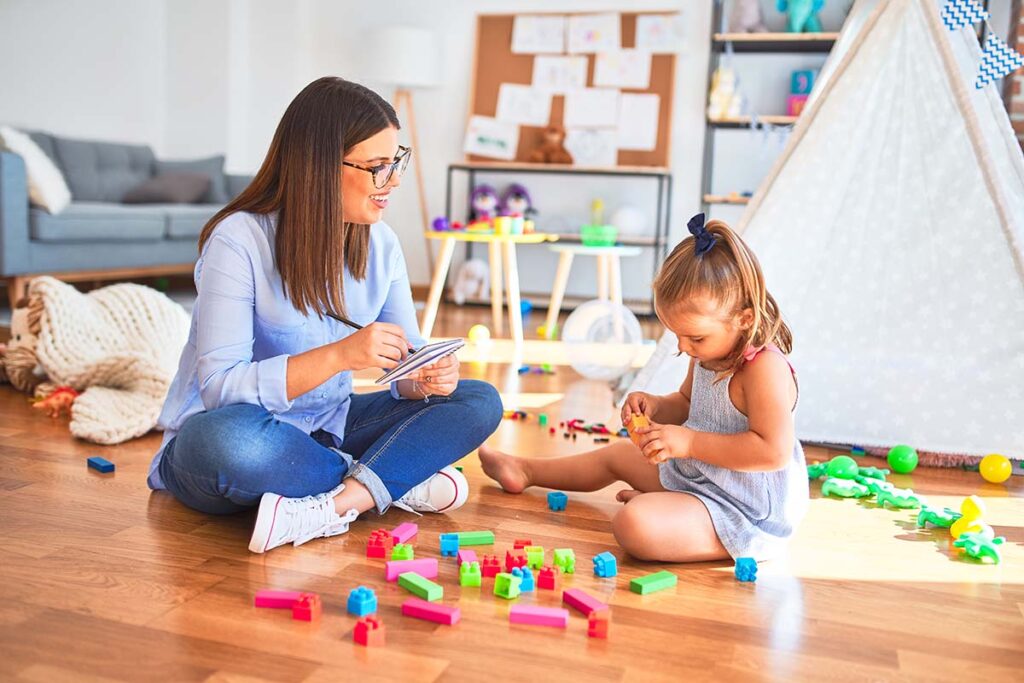Parents of children with autism spectrum disorder (ASD) may experience challenges managing their child’s behavior. Frequent meltdowns, difficulty with transitions, and challenges in following routines can overwhelm both parent and child. In applied behavior analysis therapy (ABA), visual supports can be a powerful tool to support positive behavior and communication.
A Gem of Joy offers support and education for parents who want to learn more about how visual supports can help their children. Don’t hesitate to call us at 888.501.6641, and we can help you find visual support examples that work for your family!
Understanding How Visual Supports and ABA Work Together
Visual supports are visual aids that provide structure, cues, and organization for individuals with ASD, helping them to understand better and navigate their environment. Visual supports can be used in various settings, including:
- Home
- School
- Therapy sessions
ABA therapy, in particular, emphasizes using visual supports to increase communication, reduce anxiety, and promote positive behavior.
5 Examples of Visual Supports for Learners with Autism Spectrum Disorder
Individuals with ASD often have challenges with communication and social interaction. Visual supports can help bridge this gap by providing clear, understandable cues that facilitate language and communication skills. Visual supports can also help reduce anxiety and promote feelings of safety and security. Some common visual support examples may include:
1. Visual Schedules
A visual schedule is an excellent example of visual support that can aid in reducing anxiety and providing structure for individuals with autism spectrum disorder. Visual schedules help individuals to understand what is happening throughout the day, enabling them to anticipate and prepare for transitions. Visual schedules can be created using pictures, symbols, or words, depending on each individual’s communication skills and needs.
2. Social Stories
Social stories can be a highly effective visual support tool used in ABA therapy. These use words and images to help individuals with ASD understand social situations, routines, and expectations. They help individuals anticipate events and understand what is expected of them.
3. Token Boards
Token boards are visual aids that provide immediate positive reinforcement to enable individuals with ASD to gain a sense of control over their environment and reinforce positive behavior. They can be used in various settings to support positive behavior and improve communication skills.
4. Visual Timers
Visual timers can be used to aid in successful transitions. Individuals with ASD can often struggle with moving from one task to another. Visual timers can help to reduce stress and anxiety by providing a visual cue for the transition.
5. First-Then Boards
First-then boards are visual supports that use pictures, symbols, or words to help individuals with autism spectrum disorder understand what is expected of them and what will happen next. These boards can give individuals a sense of structure and predictability while reducing anxiety and promoting positive behavior.
Reach Out to A Gem of Joy for Our Visual Supports Program in Maryland
In ABA therapy, visual supports can facilitate positive behavior and communication. The examples above are just a starting point for parents looking to build compelling visual support strategies for their child with autism spectrum disorder. Children with ASD benefit from structure, predictability, and positive reinforcement, all of which can be achieved through the use of visual supports.
Remember to use visual supports consistently and in a way that works best for your child, and be open to experimentation to find out what works best for your unique situation. With a little effort and creativity, visual supports can help your child thrive and reach their full potential.
Call A Gem of Joy today at 888.501.6641, or if you prefer to leave us a message on our contact form, we’d love to answer any questions you may have about our visual support examples and get your family started with incorporating this tool into your child’s ABA therapy program.

